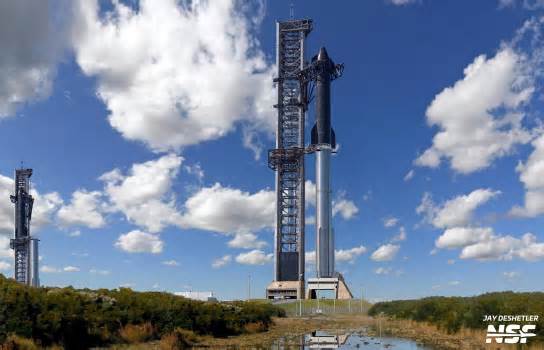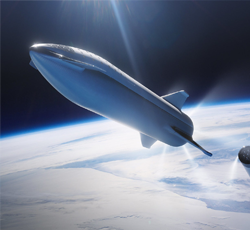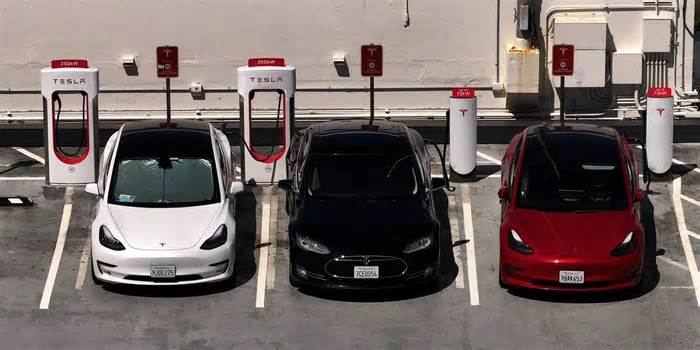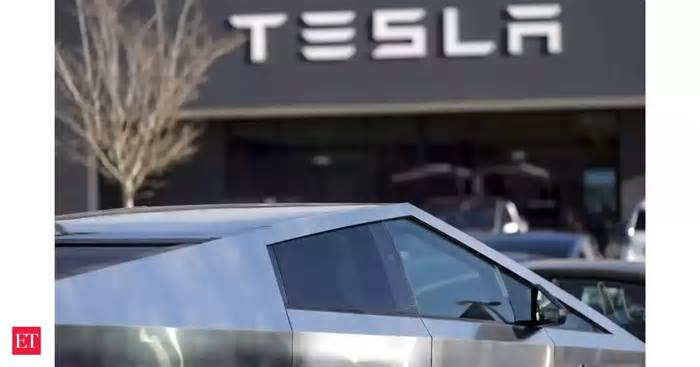
From Delta to Starship, SpaceX’s ambitious plan for...
- by NASASpaceFlight.com
- Jun 11, 2025
- 0 Comments
- 0 Likes Flag 0 Of 5

14
SpaceX’s Starship rocket is rapidly advancing through the much-needed paperwork to bring the massive rocket to the Florida Space Coast. While SpaceX is already preparing the hardware for it at the historic Launch Complex 39A at NASA’s Kennedy Space Center, it is also working to incorporate into the mix Space Launch Complex 37 located at the neighboring Cape Canaveral Space Force Station.
On June 6, the Department of the Air Force released the Draft Environmental Impact Statement for Starship-Super Heavy launches from Space Launch Complex 37, unveiling the company’s ambitious plans for the upcoming Starship launch site.
Bringing Starship to Florida
SpaceX’s efforts to establish a presence for its Starship program in Florida date back to 2019. Different efforts were made at the time to set up a production of Starship vehicles at Cidco Road in Cocoa but those efforts were shelved in order to concentrate on producing the vehicles at Starbase in Texas. The only remaining work from that effort now is the Starship heatshield tile factory at the site, which provides the needed thermal protection system (TPS) material for the Starship upper stages.
Teams had also been working at the time on setting up a Starship launch site within Launch Complex 39A (LC-39A) at NASA’s Kennedy Space Center (KSC), but efforts were stopped in early 2020. Work resumed in 2022, and between that year and the next, SpaceX built an entire new Starship launch tower at LC-39A. This work stopped once again shortly before the debut flight of Starship in April 2023.
Aerial view of SpaceX’s Starship launch pad within Launch Complex 39A (Credit: Max Evans/NSF)
In early 2024, work resumed at LC-39A to apply to the ground infrastructure all the lessons learned since that first Starship launch. Environmental reviews for a modified launch infrastructure began at the time and are still continuing in coordination with NASA and the Federal Aviation Administration (FAA). This process is expected to be complete before the end of the year and the company is aiming for a first Starship launch from LC-39A shortly after.
In the meantime, SpaceX has also been working since early 2024 on a Starship Florida launch site at Space Launch Complex 37 (SLC-37) located within the neighboring Cape Canaveral Space Force Station (CCSFS). In February 2024, the Department of the Air Force (DAF) released a Notice of Intent (NOI) indicating the department’s intention to prepare an Environmental Impact Statement (EIS) in order to study the environmental impacts of Starship launches from SLC-37.
This was followed by a scoping period between February and March of that year that kickstarted several environmental studies and interagency coordination that have lasted for about a year. On June 6 2025, the DAF released a Draft EIS, describing the results of these studies. According to the Draft EIS, the DAF believes the actions proposed for study won’t negatively impact the environment or the public.
Description of the proposed project as presented by the DAF back in March 2024 (Credit: Department of the Air Force)
Following this Draft EIS, a 45-day long public comment period will open on June 13, during which the public will be able to leave their comments based on what’s presented in the Draft EIS. Three in-person meetings for public comment scoping will occur on July 8, July 9, and July 10, followed by a similar meeting online sometime between July 25 and July 28.
Once the public comment scoping period ends, the comments will be evaluated, and any changes as a result of them will be incorporated into the final EIS for the project. That final EIS, along with a record of decision from the FAA, are expected to be released in the fall of 2025.
Regulatory timeline for the SLC-37 EIS (Credit: Department of the Air Force)
SpaceX won’t have to wait until then as it already has a limited right of entry to the site. The company has worked for the last couple of months at the pad to prepare major structures for demolition in support of future construction. SpaceX would still need a separate launch license in order to be able to carry out Starship launches from SLC-37.
Launch infrastructure at SLC-37
The Draft EIS released last week discloses in more detail SpaceX’s plans to operate Starship from SLC-37 than what was known before.
For example, the document states that the reason to set up a Starship launch site at SLC-37 is to support national security launches with Starship. This Draft EIS argues that while SpaceX has two Starship launch pads at Starbase, none of these are within a military base that could support these operations and the site is not well suited for the requested cadence of 76 launches per year.
Map showing the extent of the project, including the roads to be modified and the lease boundary areas (Credit: Department of the Air Force)
Other sites like the one being built at LC-39A are closer to a military range but lack the capacity to support the launch cadence requested. SpaceX currently uses its Falcon 9 and Falcon Heavy family of rockets to carry out such missions under the National Security Space Launch (NSSL) contract, but could offer Starship in future rounds of this program.
The Air Force has already awarded a contract to SpaceX to study using the rocket for point-to-point cargo transportation. Therefore, SpaceX already has reasons to think a Starship launch site at a military spaceport will soon be needed.
According to the schedules, the lease of the main launch site area at SLC-37 – that is, everything north of Patrol Road – would be granted to SpaceX after the record of decision is released later this year. The areas south of Patrol Road, which includes United Launch Alliance’s Horizontal Integration Facility, could be available for lease at the end of 2027.
SpaceX is planning to remove the majority of large legacy structures at the site, which includes the large Mobile Service Tower used in the past for the Delta IV and Delta IV Heavy rockets. The demolition of these structures is expected to begin this week, with clearing work planned for the remainder of the summer 2025.
Proposed launch site layout to support Starship launches from SLC-37 (Credit: Department of the Air Force)
Under the current plans, SLC-37 would feature two Starship launch pads, each with a launch mount, launch integration tower, and flame trench. The two launch integration towers would be taller than the ones built until now, each being 600 feet (183 meters) tall compared to the approximate 470 feet (143 meters) for the two towers at Starbase and the one at LC-39A.
The launch site would have a common propellant storage tank farm but separate deluge tank farms, an arrangement similar to the two launch pads present at SpaceX’s Starbase.
Philips Parkway and Old A1A road would be widened to support the transport of Starship boosters and second stages to SLC-37. Additional turn radiuses are also expected to be added at key intersections to make the passage of large hardware easier and minimize traffic disruption.
On top of the two launch integration towers, SpaceX is planning to build up to two potential catch towers in order to add flexibility and support the high cadence of operations from the site.
Aerial view of the two launch sites at Starbase’s launch complex. SpaceX would replicate a similar dual setup at SLC-37 under the current plans with the addition of up two catch towers for added flexibility. (Credit: Jack Beyer/NSF)
This expected high cadence of operations will be met with several challenges, one of them being the supply of propellant to the launch site. SpaceX’s plans include building and installing a natural gas pretreatment system, a methane liquefier, and an air separation unit.
The natural gas pretreatment system would take natural gas supplied via pipeline and purify it to extract the methane needed to power Starship. Then, the methane liquefier would turn the methane gas into a liquid before sending it to the propellant storage tanks at SLC-37.
On the other hand, the air separation unit would be used to separate oxygen and nitrogen from the air and turn them into liquids. These two gases are the most common gases in our atmosphere and between them they make up over 95 percent of dry air, making it trivial to capture them from the air and use them for launch site operations.
Liquid nitrogen is used at the launch site mainly for thermal conditioning and subcooling of Starship’s two cryogenic propellants. Liquid oxygen is used by Starship as its oxidizer to burn the liquid methane fuel.
Starship Mission Operations
The concept of operations and the scope of the Draft EIS covers variants of Starship that haven’t flown yet or haven’t even been announced. The numbers used in the study for thrust, rocket height, propellant capacity, and more are well beyond the capabilities and properties presented recently by Elon Musk at a talk at the end of May.
Starship, Super Heavy, and Raptor properties used for the EIS. Both vehicles more than surpass the capabilities and properties of the current vehicles and known proposed versions of Starship. (Credit: Department of the Air Force)
This likely reflects SpaceX’s desire to future-proof this study and cover under it all future variants of Starship that may be in the plans at the company. This way, if another future version is developed, this study won’t have to be repeated or modified as long as it fits within the figures mentioned within it.
Under the plan studied by the DAF, launch operations would begin from SLC-37 in 2026, for which SpaceX would need an additional 450 full-time employees or contractors in order to support the planned activities.
Starship stages would initially be built at SpaceX’s production facility at Starbase in Texas. These would then be transported horizontally on barges to Florida ahead of their testing and launch at the site. These transports would only take place for the first few years with a peak of transport activity expected in 2027 and a tail off over the next five years.
In addition to continued infrastructure development at Starbase, Texas, where SpaceX is headquartered, SpaceX is expanding its Starship operations in Florida, bringing Starship production and launch capabilities to the Space Coast → https://t.co/PYket6ALNO pic.twitter.com/akKEL6rXaA
Please first to comment
Related Post
Stay Connected
Tweets by elonmuskTo get the latest tweets please make sure you are logged in on X on this browser.






 Energy
Energy


















